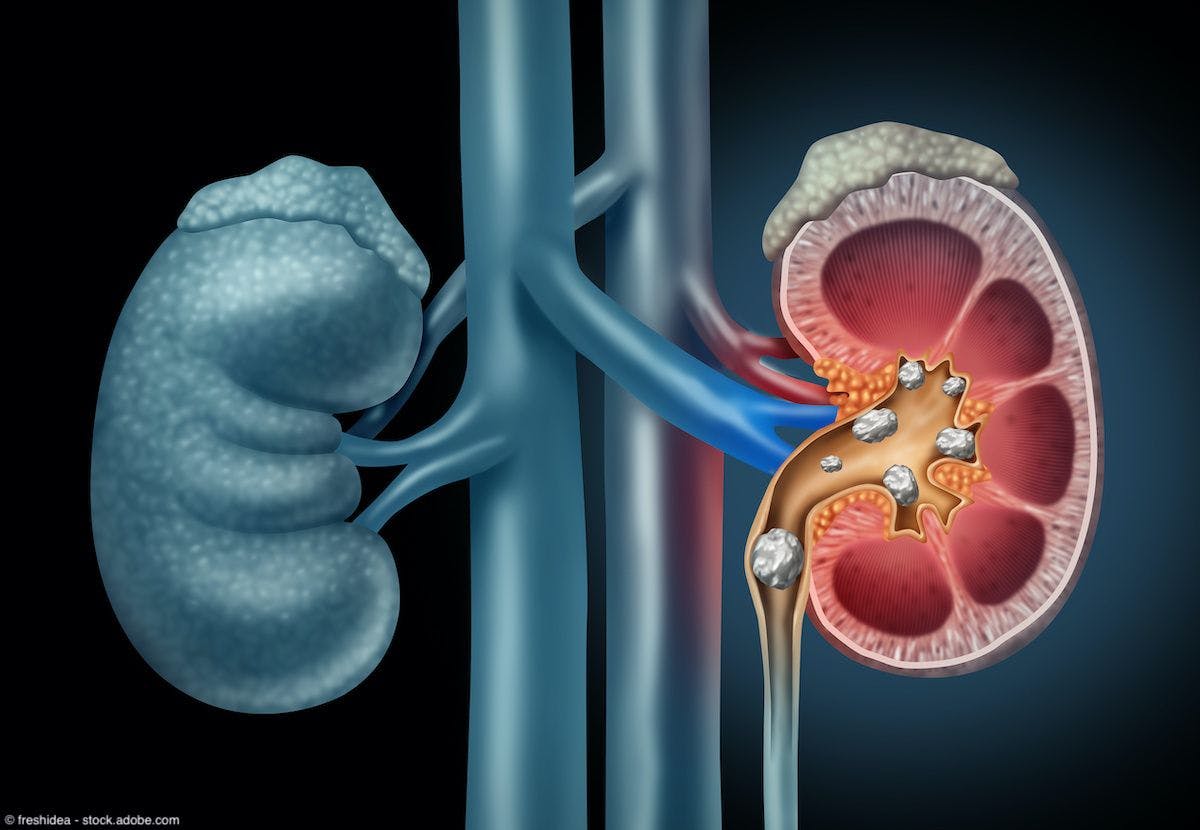News
Article
Urology Times Journal
FDA grants priority review to enzalutamide for nonmetastatic HSPC
Author(s):
The application is specifically for use of enzalutamide in patients with nonmetastatic hormone-sensitive prostate cancer with high-risk biochemical recurrence and is supported by data from the phase 3 EMBARK trial.
The FDA has granted a Priority Review designation to a supplemental New Drug Application (sNDA) for enzalutamide (Xtandi) for the treatment of patients with nonmetastatic hormone-sensitive prostate cancer (nmHSPC) with high-risk biochemical recurrence (BCR).1
"We believe the EMBARK data demonstrate the potential of Xtandi, if approved, to help patients earlier in the course of their disease, building on Xtandi’s foundation as an existing standard of care in prostate cancer,” stated Chris Boshoff, MD, PhD.

The sNDA is based on findings from the phase 3 EMBARK trial, which showed that enzalutamide (Xtandi) plus leuprolide reduced the risk of metastasis or death by 58% compared with placebo plus leuprolide in this patient population (HR, 0.42; 95% CI, 0.31-0.61; P < .0001).2
The median metastasis-free survival (MFS) was not yet reached (NR; 95% CI, NR-NR) in the enzalutamide/leuprolide arm vs NR (95% CI, 85.1 months–NR) in the placebo alone arm. The 3- and 5-year MFS rates for those treated with enzalutamide plus leuprolide were 92.9% and 87.3%, respectively, compared with 83.5% and 71.4% for those given leuprolide alone.2
"The FDA's granting of a Priority Review designation reinforces the need to bring new treatment options for patients with high-risk biochemical recurrent [nmHSPC]," Chris Boshoff, MD, PhD, chief oncology research and development officer, executive vice president, Pfizer, which co-develops enzalutamide with Astellas, stated in a press release.1
"We believe the EMBARK data demonstrate the potential of Xtandi, if approved, to help patients earlier in the course of their disease, building on Xtandi’s foundation as an existing standard of care in prostate cancer,” added Boshoff.1
EMBARK was a double-blind, placebo-controlled trial that randomly assigned adult patients with nmHSPC (also knowns as nonmetastatic castration-sensitive prostate cancer) with high-risk BCR (n = 1068) in a 1:1:1 fashion to receive either oral enzalutamide monotherapy at a dose of 160 mg once daily (n = 355), enzalutamide 60 mg once daily in combination with intramuscular or subcutaneous leuprolide at a dose of 22.5 mg once every 12 weeks (n = 355), or placebo plus intramuscular or subcutaneous leuprolide at a dose of 22.5 mg once every 12 weeks (n = 358).2,4
The median follow-up in the enzalutamide combination and the leuprolide/placebo arms was approximately 60 months. The primary end point of the study was MFS by BICR. Key secondary end points included MFS of enzalutamide monotherapy vs placebo plus leuprolide, time to PSA progression, time to antineoplastic therapy, and overall survival (OS) of enzalutamide plus leuprolide or enzalutamide monotherapy vs placebo plus leuprolide.2,4
Results for the monotherapy arm showed that patients receiving single-agent enzalutamide also experienced a reduction in the risk of metastasis or death of 37% compared with those in the placebo arm (HR, 0.63; 95% CI, 0.46-0.87; P = .0049), meeting its MFS end point. The median MFS was NR (95% CI, NR-NR) in the enzalutamide monotherapy arm.2
Additional findings from the study showed that patients in the enzalutamide combination arm experienced a 93% reduction in the risk of PSA progression compared with those in the placebo arm (HR, 0.07; 95% CI, 0.03-0.14; P < .0001). Patients in the enzalutamide monotherapy arm also experienced a benefit in terms of PSA progression over those who received placebo (HR, 0.33; 95% CI, 0.23-0.49; P < .0001). Progression risk in terms of starting a new antineoplastic therapy was reduced by 64% and 46% over placebo in the enzalutamide combination(HR, 0.36; 95% CI, 0.26-0.49; P < .0001) and the enzalutamide monotherapy(HR, 0.54; 95% CI, 0.41–0.71; P < .0001) arms, respectively.2,3
Although OS data were not yet mature, a positive trend favoring the enzalutamide combination arm over the placebo arm was observed (HR, 0.59; 95% CI, 0.38-0.90; P = .0142), although these data did not cross the interim efficacy boundary of P < .0001. OS findings also trended in favor of enzalutamide monotherapy over the placebo regimen (HR, 0.77; 95% CI, 0.51-1.15; P = .1963).2
In terms of safety, the profile of the combination was similar to that of enzalutamide and leuprolide as individual agents. The most common adverse effects (AEs) in the enzalutamide combination arm included fatigue, hot flush, and arthralgia. Commonly occurring any-grade AEs in the monotherapy arm consisted of fatigue, gynecomastia, and arthralgia.3
"Biochemical recurrence can be one of the first indicators that prostate cancer is returning or will spread, particularly among those patients that experience rapid PSA doubling times," Ahsan Arozullah, MD, MPH, senior vice president and head of oncology development, Astellas, stated in a press release.1 "The goal of treatment in this setting is to delay the spread of the cancer cells to other parts of the body. The addition of Xtandi to leuprolide has shown greater clinical benefit compared to placebo plus leuprolide, and we look forward to working with the FDA and other global regulatory authorities to bring Xtandi to these patients."
References
1. FDA Grants Priority Review for XTANDI® in Non-Metastatic Castration-Sensitive Prostate Cancer with High-Risk Biochemical Recurrence. Published online and accessed August 23, 2023. https://www.prnewswire.com/news-releases/fda-grants-priority-review-for-xtandi-in-non-metastatic-castration-sensitive-prostate-cancer-with-high-risk-biochemical-recurrence-301907279.html
2. Shore N, de Almeida Luz M, De Giorgi U, et al. EMBARK: a phase 3 randomized study of enzalutamide or placebo plus leuprolide acetate and enzalutamide monotherapy in high-risk biochemically recurrent prostate cancer. Presented at: 2023 AUA Annual Meeting; April 28-May 1, 2023; Chicago, IL. Abstract LBA02-09
3. XTANDI (enzalutamide) plus Leuprolide Reduced the Risk of Metastasis by 58% in Non-Metastatic Hormone-Sensitive Prostate Cancer versus Placebo plus Leuprolide. News release. April 29, 2023. Accessed April 29, 2023. https://newsroom.astellas.us/2023-04-29-XTANDI-R-enzalutamide-plus-Leuprolide-Reduced-the-Risk-of-Metastasis-by-58-in-Non-Metastatic-Hormone-Sensitive-Prostate-Cancer-versus-Placebo-plus-Leuprolide
4. Safety and efficacy study of enzalutamide plus leuprolide in patients with nonmetastatic prostate cancer (EMBARK). ClinicalTrials.gov. Updated April 27, 2023. Accessed April 29, 2023. https://clinicaltrials.gov/ct2/show/NCT02319837































